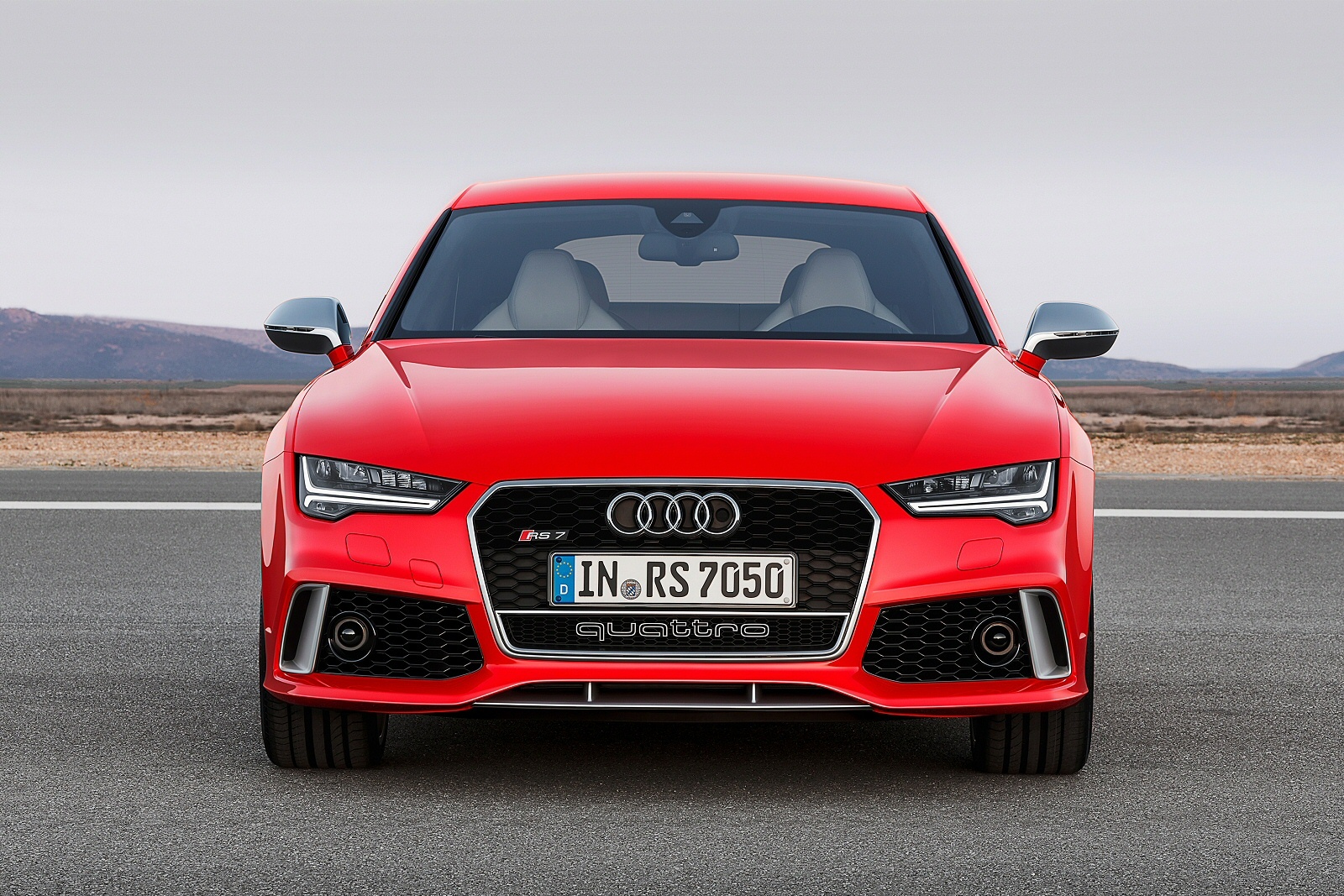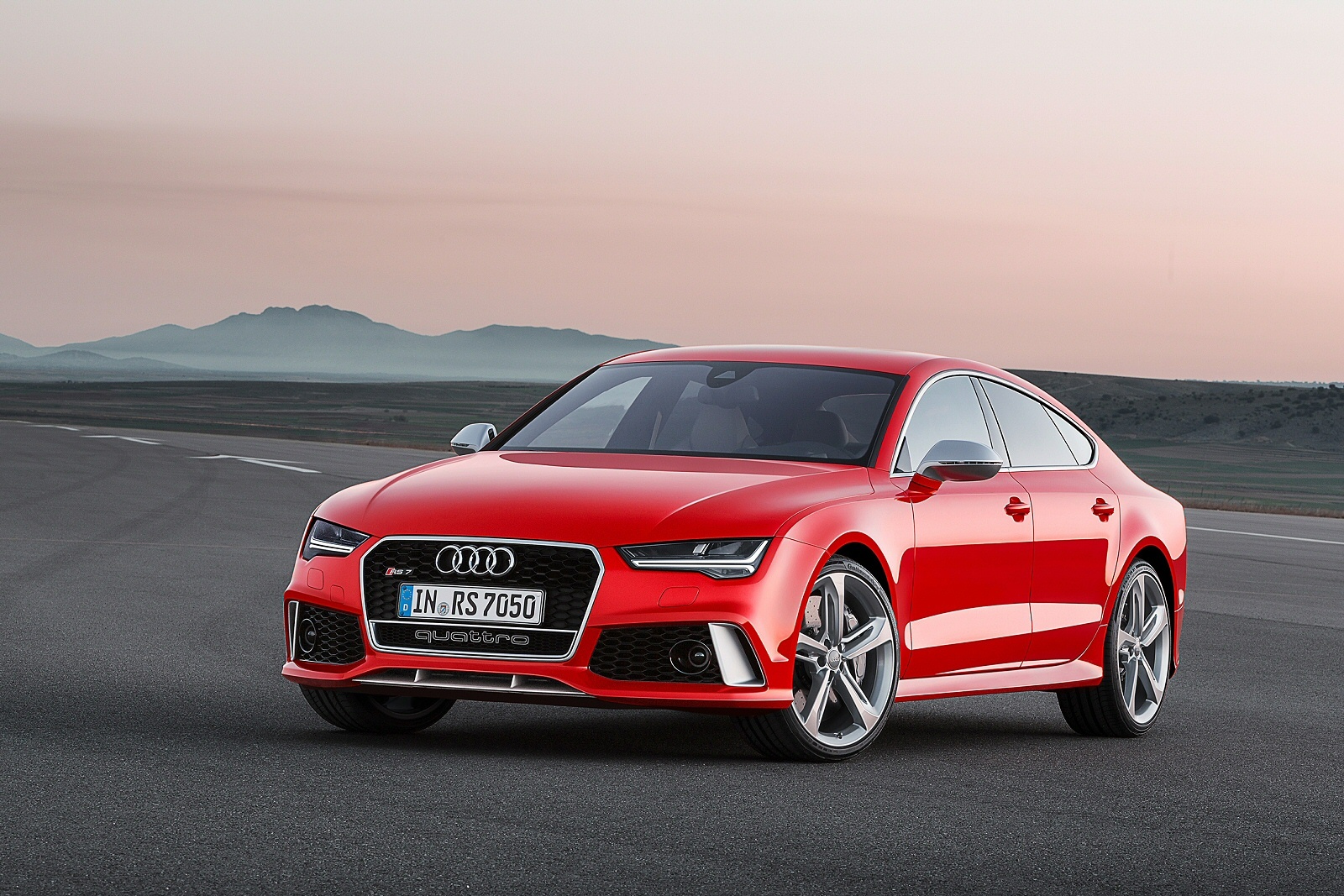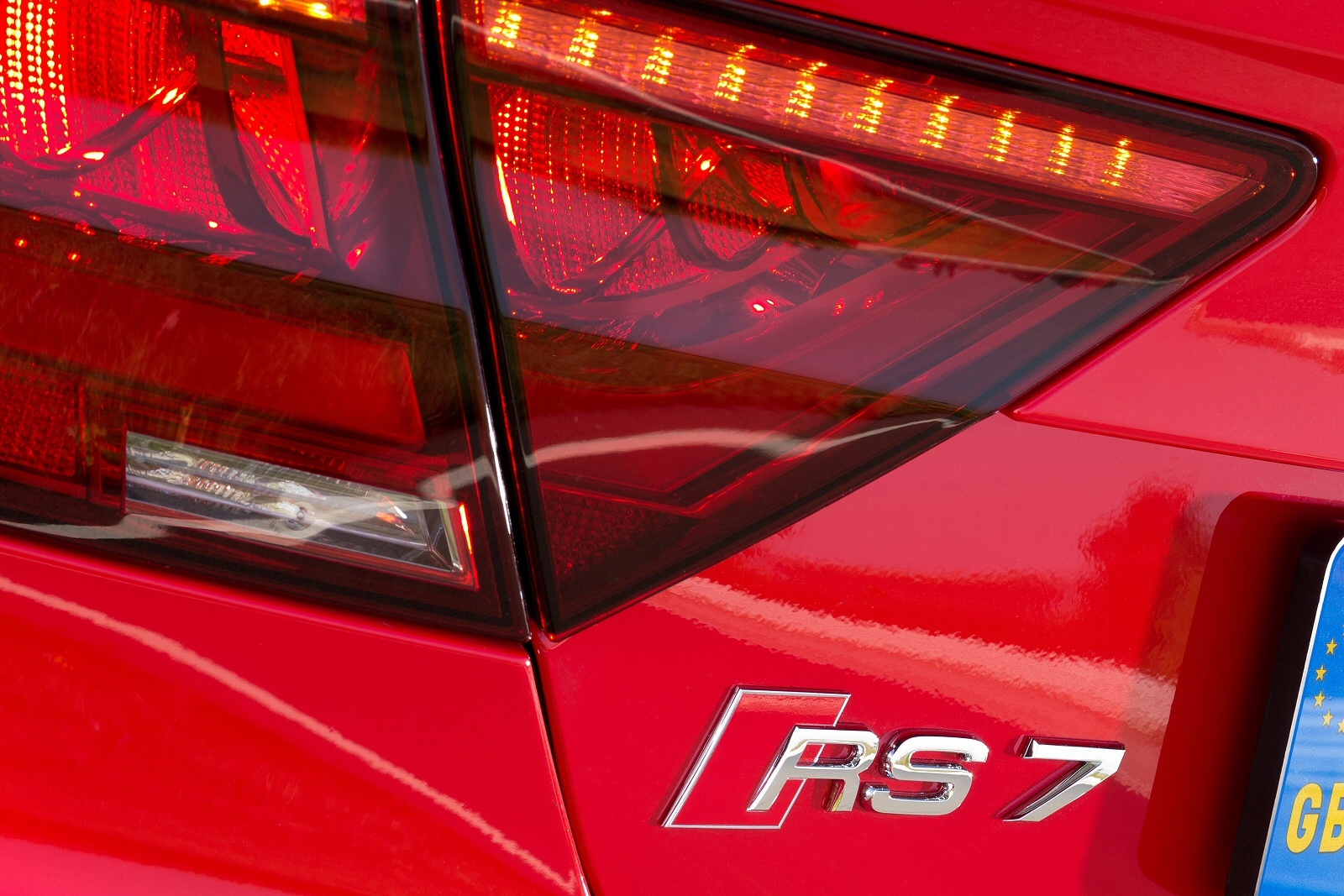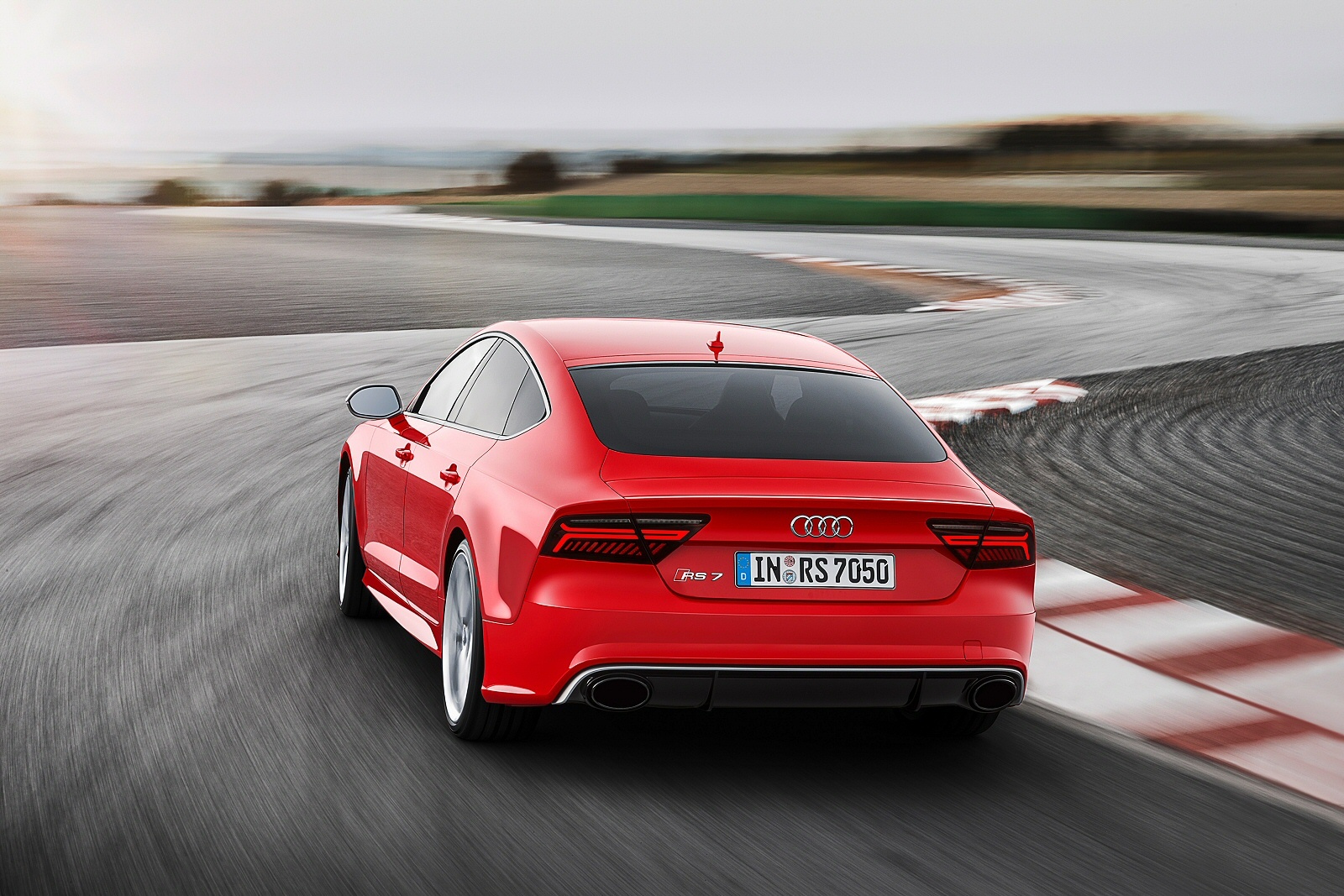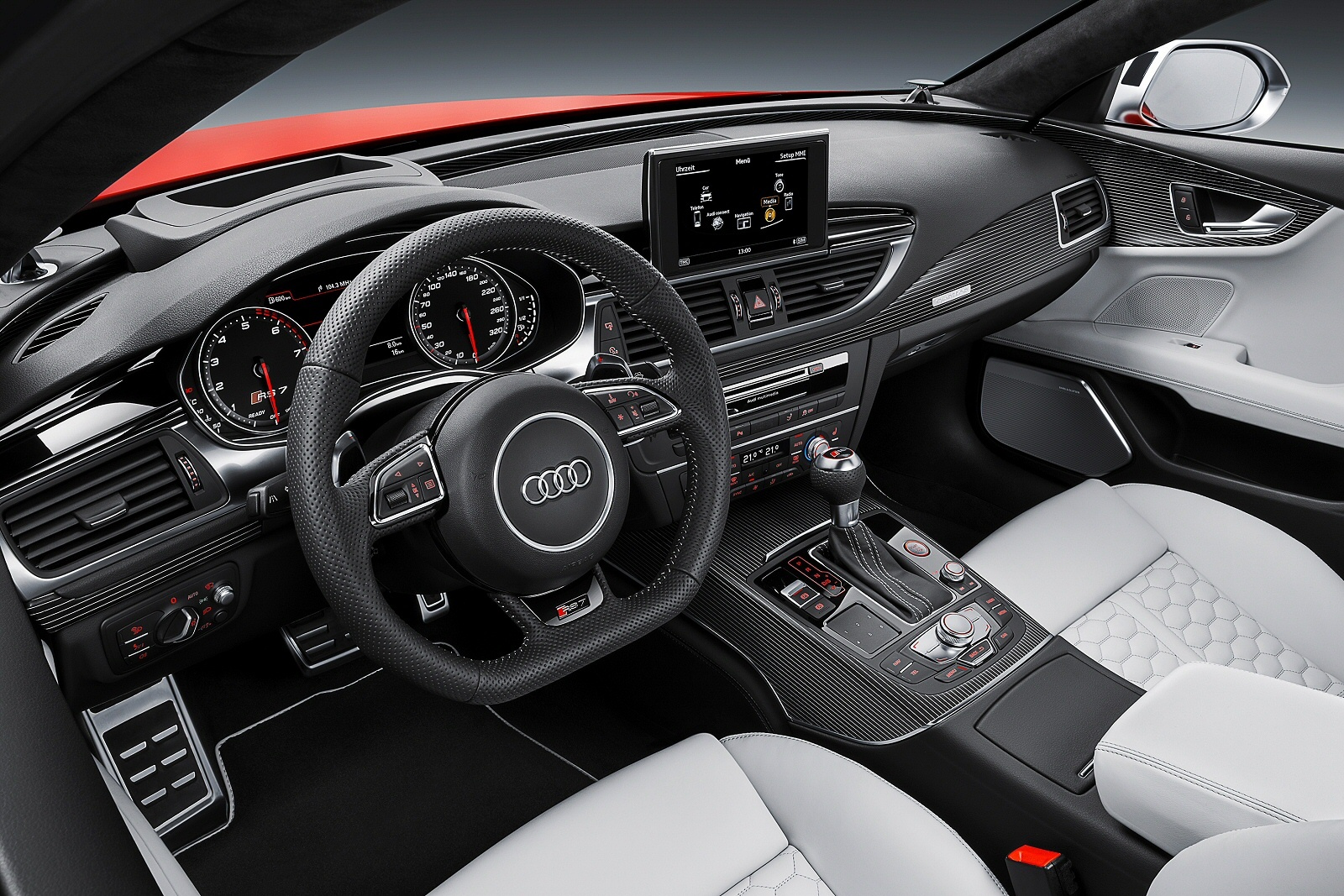We know RS model Audis are a bit special but the RS7 Sportback is something distinctly rare and extreme. Andy Enright takes a look at the revised version.
The S7 gave us a taster of what this model might be like but, in turning the wick up from 420 to 552bhp, the RS7 now offers genuinely devastating performance. Buyers get adaptive air suspension, a cylinder-on-demand (COD) system to save on fuel and a maximum speed that’s nominally set at 155mph but which can be upped to 174mph or even 190mph with the addition of optional Dynamic packs. A massive 516lb/ft slug of torque is available between 1,750 and 5,500rpm, with the eight-speed ZF automatic box plugging you right into the meat of the action.
The Quattro four-wheel-drive system is rear-biased, sending 60% of power to the rear axle, and it also features a limited-slip differential and torque-vectoring. Dynamic Ride Control swaps out the standard air suspension with steel coils and Audi’s hydraulic, diagonally interconnected shock absorbers, but most testers conclude that it merely makes the ride quality too firm for British road conditions.
So what exactly is this RS7? As the second recipient of the twin-turbocharged 4.0-litre V8 after the RS6, is this merely a version of the estate in a posh frock?
The 2,915mm wheelbase shared by the two cars gives a clue as to how closely they’re related but there are key differences. The RS7 is a little quieter than the RS6 thanks to a modified exhaust and less fresh air in the rear end of the car for the noise to career about in.
The tyres are also slightly narrower on the RS7, which helps steering tactility and reduces tramlining a bit. The RS7 can be identified by its RS body styling, including enlarged front air inlets, front spoiler, honeycomb design grille, rear diffuser, roof spoiler and side sill extensions. There are also matt-finished aluminium-look door mirror housings and 20in twin-spoke design alloy wheels.
You’ll need an £85,000 budget for this RS7 Sportback once you’ve allowed for a few well chosen extras, so you’re looking at a premium of around £21,000 over the already decidedly brisk S7 model. While it doesn’t look bad value against the £100,000+ Porsche Panamera Turbo and the BMW M6 Gran Coupe, which breaks six figures with one or two options, perhaps at this price point we should instead be looking at Jaguar’s 545bhp XJR as a closer rival. Mind you, that car costs around £93,000.
As a range-topping car, there’s no shortage of equipment thrown in as standard in an RS7. You get MMI Navigation Plus with MMI Touch – including an 8in colour display and seven-digit postcode recognition. The stereo features DAB digital radio and Bose surround sound. There’s Bluetooth, an Audi Music Interface and a head-up display. That’s on top of gear like the three-spoke flat-bottomed leather multi-function steering wheel with gear shift paddles in aluminium look, cruise control, four-zone air conditioning and an ambient-lighting package.
There aren’t too many options that you’ll feel overly compelled to plump for, so you won’t need to worry unduly about inflating the list price. Still, this remains an expensive car with a big petrol engine and that’s usually a guarantee of scary residuals. The fact that it’ll be likely to shed 40% of its value over three years is just something that owners will have to accept with their eyes open at the time of purchase. It’s certainly no worse than any of its key rivals.
On other measures, the RS7 is actually remarkably good for a car with this power output and which weighs in at nearly two tonnes, especially in this slightly cleaner and more frugal revised form. The combined fuel economy figure is 3% better at 29.7mpg – far from catastrophic, although it will be tough to resist putting the turbos to work in earnest. In day-to-day motoring, you’d be pleased to break 20mpg.
The carbon dioxide emissions of 221g/km are also extremely good, 4% better than before. By contrast, a Porsche Panamera Turbo develops less power, is thirstier and emits more carbon dioxide.
The Audi RS7 offers all the grip, composure and sheer brawn most will ever need. If you were looking for the last word in driver involvement, you may find it a little aloof, but then buyers of this class of car tend to realise that they’re exercises in compromise, albeit artfully designed ones.
It’s not short of charisma and it makes all the right numbers but is there an X factor to this car that’s present in the very best RS products from Ingolstadt? An X factor that’s there in its sister car, the RS6 Avant? That will likely be for you to decide, as these things are intensely personal.
Audi has clearly gone about this car in a very
correct manner. Some may see the RS7’s automatic gearbox as a less-focused driver choice than the twin-clutch S-tronic transmission that’s fitted to the S7 but to drive it is to realise the genius in the eight-speed auto’s logic and execution. All the constituent ingredients seem to have been assembled, but whether they hang together cohesively is a question that doesn’t always disappear. Over to you.
Facts & figures
Model: Audi RS7 Sportback
Price: Around £85,000
Engine: Twin-turbocharged 4.0-litre V8
Performance: 552bhp and 516lb/ft of torque, top speed 190mph (with optional Dynamic pack)
Economy: 29.7mpg combined
CO2 rating: 221g/km
